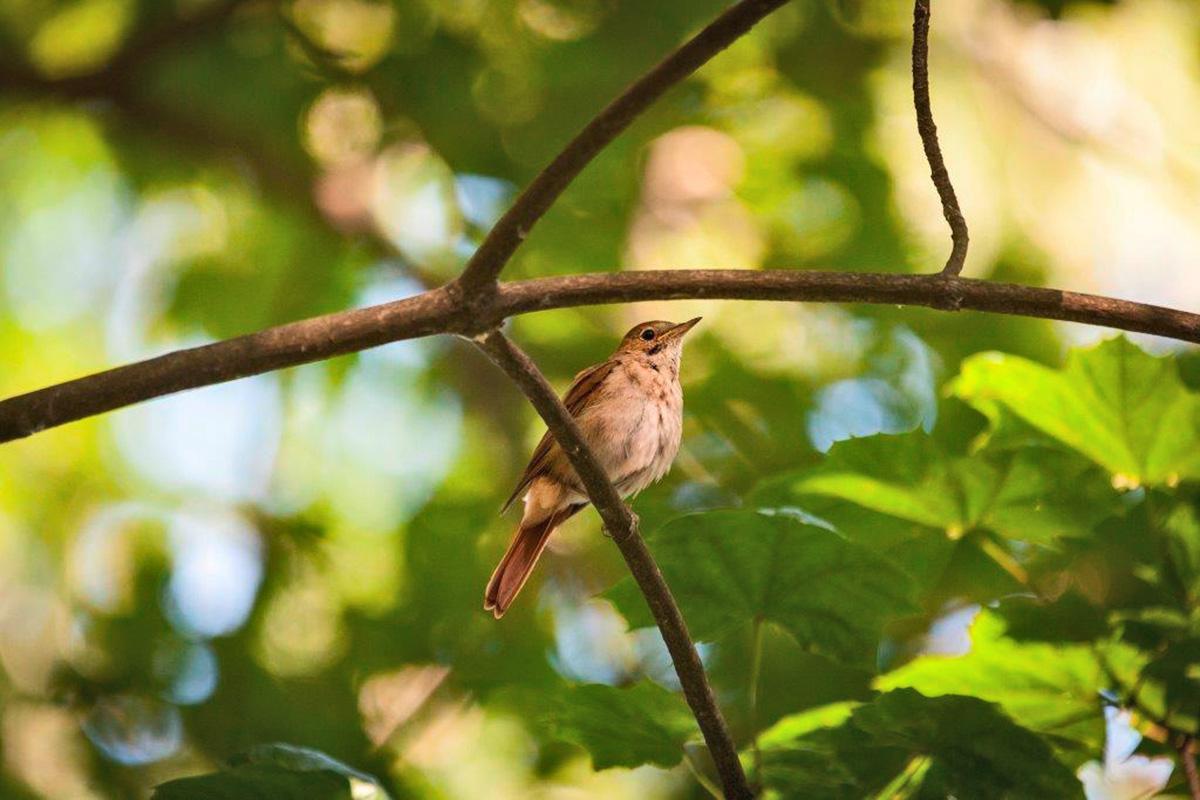This article was first published in our journal For Nature (issue 1/2019).
Thousands of songbirds live in the parks. Berliners record their singing – for science.
Daniela Friebel came across the nightingale by chance: A friend asked her if she wanted to test the prototype of a sound app. "Finding nightingales with your cell phone sounded amusing," says Daniela Friebel. "However, I had no idea how nightingales sing and had to listen to the singing on the Internet first." That was three years ago. Today the photographer and artist is one of thousands of citizen scientists who support the Nightingale Research Case at the Museum für Naturkunde.
Citizen scientists create new knowledge in a variety of ways: whether collecting mosquitoes, observing the starry sky or photographing fire salamanders – everyone can support the work of researchers.
In the nightingale season from late April to early July, the nightingale males trill to defend their territory and to beguile females and to reproduce. A flirting aria that can be heard particularly well at night when the rest of the bird choir falls silent; nightingales also sing during the day to defend their territory.
In contrast to other bird species, regional differences in nightingale song have not been explored. Does the nightingale (Luscinia megarhynchos) sing in dialects? So that the researchers at the museum can find an answer to this question, they are supported by hobby researchers across Germany, also known as citizen scientists. The only tool is the free Naturblick app developed at the Museum für Naturkunde, which can be used to record the singing. Naturblick is funded by the Federal Ministry for the Environment, Nature Conservation and Nuclear Safety.
Capital of the nightingales
"Berlin is the capital of the nightingales," reveals Silke Voigt-Heucke, head of the citizen science project. As part of the project, over 7,000 nightingale songs from 14 European countries have been collected over the past two years.
Whistling noises and a beating trill: According to Voigt-Heucke, the nightingale song is unmistakable in its structure and variability. The app uses an automatic pattern recognition algorithm to identify the song. If desired, citizen researchers can record the singing anonymously and then share it with the project's database with automatic location and time information. Using the location information, the team's researchers then investigate whether the nightingales elsewhere really sing differently than the Berlin birds. The project is funded by the Federal Ministry of Education and Research.
In the spring of 2018, over 1,500 mostly Berlin citizens had already documented the love songs of the nightingales that occur in the capital. Data from over 2,000 citizen researchers came across Germany. Over 1,500 new types of stanzas were added to the hitherto scientifically known vocal repertoire that makes up the love songs of the nightingale males: on average, they have a repertoire of 190 individual types of stanzas.
The approximately 3,000 Berlin nightingales mostly live in parks. As ground breeders, they like dense bushes with leftover leaves for building the nest. They avoid well-kept, tidy gardens. An insider tip from the citizen scientist Daniela Friebel: "The best place to look is in the vicinity of dense, inaccessible bushes. I recommend letting yourself drift through the city on your bike on your way home at night. At the Platz der Luftbrücke square I came across a male nightingale who started his song."
Projects such as the Nightingale Research Case attract laypeople and will become more and more important in the future. Because there are a number of data holes that can be closed in this way. In addition to nightingale observations, it can also be about measuring the pollution of water bodies or the air quality worldwide. "The potential of Citizen Science is huge, as citizens can collect data directly on site," says Maike Weißpflug, a social scientist at the museum. Together with an international team, she has just discovered that citizens' data help to achieve the United Nations' sustainability goals.
Citizen Science Festival 2020
The platform Bürger schaffen Wissen at the Museum für Naturkunde Berlin networks the scene in Germany. The working group Citizen Science Berliner Raum has just been founded in Berlin. In addition, the museum has supported citizen researchers from all over Europe in building an international network. Next year, on the occasion of the German EU Council Presidency, the museum invites to an international Citizen Science Conference. There will be a Citizen Science Festival for citizens, too.
First results from the research case Nachtigall show that there are some types of stanzas that are sung particularly frequently in Berlin. This could mean that the nightingale actually sings in "Berlin dialect". And Daniela Friebel? She is a nightingale fan and expert at the same time. Always, really always, she hears when a nightingale starts its song.
Text: Carmen Schucker
